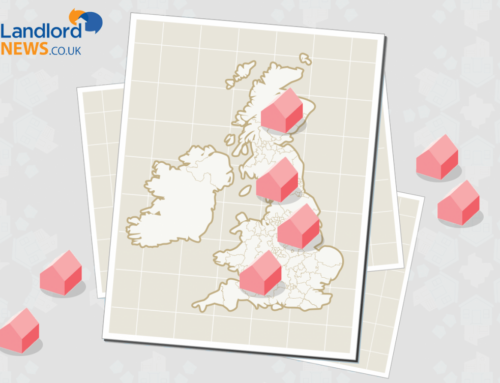This article is an external press release originally published on the Landlord News website, which has now been migrated to the Just Landlords blog.

Many people are turning to buy-to-let as a viable investment option. However, do we realise the sheer scale of this trend?
Now, over two million people are private landlords. This has risen by 600,000 since the financial crash. In 2000, under 2% of mortgages in Britain were buy-to-let. Now there are 900 buy-to-let mortgages available. These account for 15% of all home loans.
This is around £200 billion worth of borrowing – close to the national debt of Greece. And this is borrowed by private individuals.
The sector is still growing. New buy-to-let mortgages make up 18% of all new home loans. Additionally, the tax system is beneficial to property investors. The interest payments on a buy-to-let property are tax deductible. Landlords pay tax on the rental income they receive, but minus what their mortgage payments cost.
This costs the Treasury around £5 billion per year.
Last week, the Bank of England (BoE) cautioned over the buy-to-let boom.
Its Financial Stability Report, created to highlight potential risks to the financial system that could fuel another 2008-style crash, says that buy-to-let “could post a risk to financial stability.”
One factor it stated was “a growing appetite for risk” among lenders. Days after this was published, reports were released, indicating a price war among banks, which are reducing rates to attract new landlords.
Property investors give a deposit on the loan and borrow the remaining balance with a cheap, low interest-rate mortgage, then rent out the property. The rent covers the mortgage payments.
For example, an investor has a £50,000 deposit and buys a £200,000 property with the usual interest-only mortgage.
Buy-to-let rates average around 5%. Let’s suggest this investor has a 4% rate. The landlord would need £6,000 per year to cover the mortgage. The average yield on a residential property (the rent earned as a percentage of its price) is about 5%. The landlord could make £10,000 a year in rent.
However, there may be periods when the landlord has no tenants. Landlords are advised to assume their property will be empty for one month a year. This is over £800 gone. Additionally, there are other costs, such as maintenance. This is usually 1% of the property’s value each year. In this example, that is £2,000.
But the BoE has also warned about an increase in rates. It says that buy-to-let investors are “more vulnerable to rising interest rates.”
The current 0.5% rate is a record low and economists expect it to rise next spring.
If rates rise to just 1.5% – also a historically low rate – the landlord in the example above will see their annual bill grow to £7,500. This, along with maintenance and void periods, would eat up the profit. And if rates rose even further, the investor may be forced to sell.
If many landlords had to do this, there would be a flood of properties coming onto the market and prices would drop.
Investors would be in negative equity or unable to sell. They may have to think about selling their own home or cashing in more of their pension.
The BoE warned last week: “In a downswing, investors selling buy-to-let properties into an illiquid market could amplify falls in house prices.”1
As the trend emerged, buy-to-let fuelled house price rises, but it could push them down if the sector collapses.
Selling a buy-to-let property may not be as sentimental as selling a personal dwelling, but banks may be less patient if customers are in arrears, as the borrower’s own home is not at stake.
This may not be the future for buy-to-let, however, if it continues to grow and house prices do not fall, the property market will also suffer. If more people become property investors, the gap will widen between those who own a home and an investment property, and those who must rent forever.





